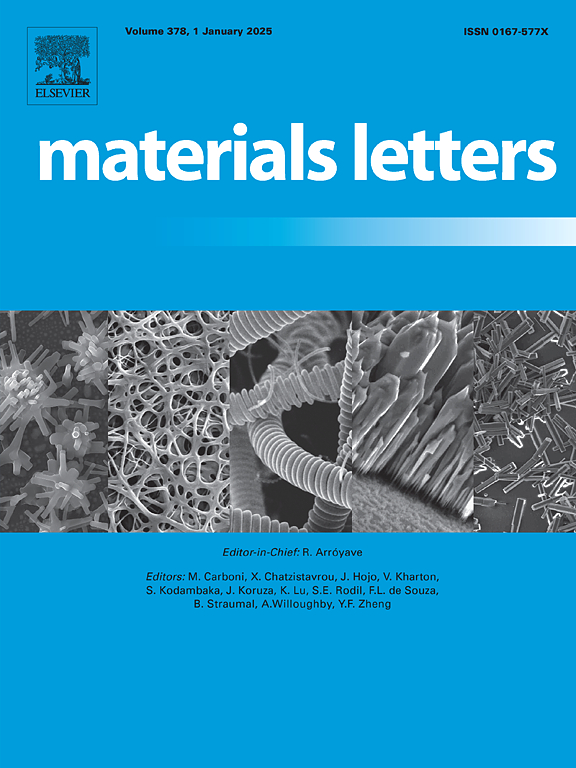Boron-modified Ce-Zr mixed oxide catalysts for improved low-temperature NOx reduction
IF 2.7
4区 材料科学
Q3 MATERIALS SCIENCE, MULTIDISCIPLINARY
引用次数: 0
Abstract
This study explored the promotional effect of nanometal boron (B) modification on SCR performance over Ce-Zr (CZ) mixed oxide catalysts. Experimental results indicated that the optimal B0.3CZ sample achieved over 90 % NO conversion and N2 selectivity within 240–360 °C, whereas the pristine CZ sample failed to reach complete NO conversion across the same temperature range. Characterization studies revealed that boron addition formed interactions with Ce/Zr and heightened surface acid strength. Importantly, these interactions enhanced redox capacity and increased surface ratios of Ce3+ and Oβ, thereby boosting low-medium SCR activity. Additionally, the strengthened surface acidity improved NH3 adsorption, ensuring high N2 selectivity at elevated temperatures. Overall, nonmetal boron modification might be one promising strategy for promoting catalytic performance in SCR systems.
硼改性Ce-Zr混合氧化物催化剂改善低温NOx还原性能
本研究探讨了纳米金属硼(B)改性对Ce-Zr (CZ)混合氧化物催化剂SCR性能的促进作用。实验结果表明,在240 ~ 360℃范围内,优化后的b0.3 3cz样品的NO转化率和N2选择性均达到90%以上,而原始CZ样品在相同温度范围内无法达到完全的NO转化率。表征研究表明,添加硼与Ce/Zr形成相互作用,提高了表面酸强度。重要的是,这些相互作用增强了氧化还原能力,增加了Ce3+和Oβ的表面比,从而提高了中低SCR活性。此外,增强的表面酸度改善了NH3的吸附,确保了在高温下的高N2选择性。综上所述,非金属硼改性可能是提高SCR系统催化性能的一种有前景的策略。
本文章由计算机程序翻译,如有差异,请以英文原文为准。
求助全文
约1分钟内获得全文
求助全文
来源期刊

Materials Letters
工程技术-材料科学:综合
CiteScore
5.60
自引率
3.30%
发文量
1948
审稿时长
50 days
期刊介绍:
Materials Letters has an open access mirror journal Materials Letters: X, sharing the same aims and scope, editorial team, submission system and rigorous peer review.
Materials Letters is dedicated to publishing novel, cutting edge reports of broad interest to the materials community. The journal provides a forum for materials scientists and engineers, physicists, and chemists to rapidly communicate on the most important topics in the field of materials.
Contributions include, but are not limited to, a variety of topics such as:
• Materials - Metals and alloys, amorphous solids, ceramics, composites, polymers, semiconductors
• Applications - Structural, opto-electronic, magnetic, medical, MEMS, sensors, smart
• Characterization - Analytical, microscopy, scanning probes, nanoscopic, optical, electrical, magnetic, acoustic, spectroscopic, diffraction
• Novel Materials - Micro and nanostructures (nanowires, nanotubes, nanoparticles), nanocomposites, thin films, superlattices, quantum dots.
• Processing - Crystal growth, thin film processing, sol-gel processing, mechanical processing, assembly, nanocrystalline processing.
• Properties - Mechanical, magnetic, optical, electrical, ferroelectric, thermal, interfacial, transport, thermodynamic
• Synthesis - Quenching, solid state, solidification, solution synthesis, vapor deposition, high pressure, explosive
 求助内容:
求助内容: 应助结果提醒方式:
应助结果提醒方式:


